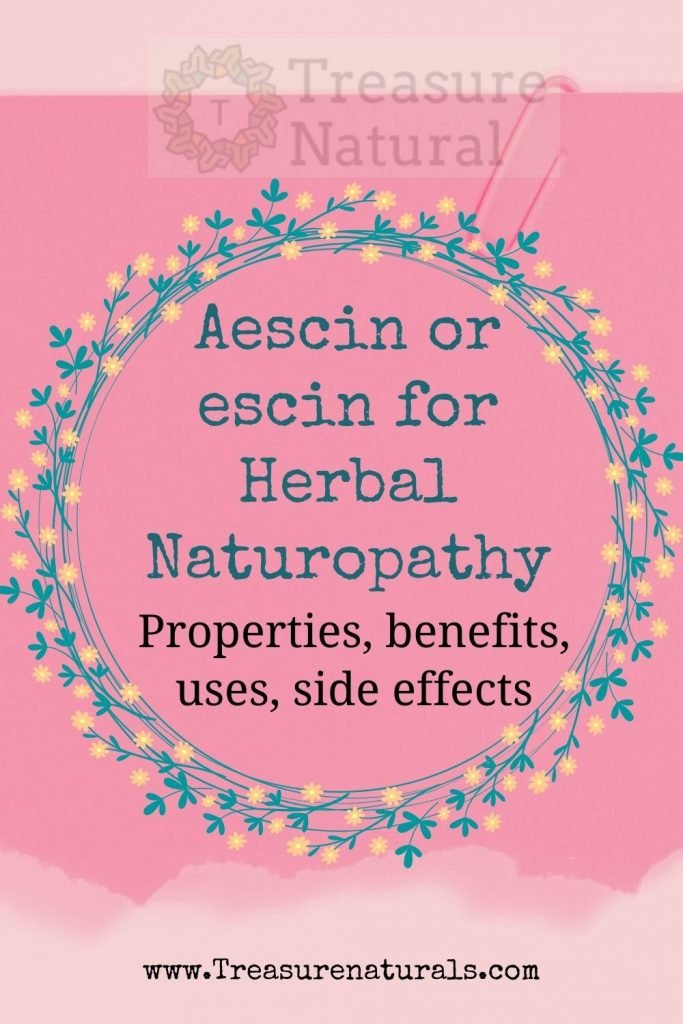
Aescin is a mixture of saponins present in horse chestnut with an anti-inflammatory vasoprotective and vasoconstrictive action, useful for the health of the circulatory system and against cellulite and hemorrhoids. Let’s find out better.
Meaning of aescin
Aescin is a mixture of crude saponins, which by high hydrolysis is reducible to escigenin, which can be chemically defined as a pentacyclic triterpene. In particular, β-escin is considered the main molecule responsible for the vasoprotective effects.
The effect of aescin on circulatory system disorders is due both to its transformation into the active anti- inflammatory component and to an increase in the excretion of glucocorticoids which inhibit the inflammatory process and the formation of edema.
The reduction of edema would also be due to a surfactant effect exerted by the substance, to an increase in the ability of erythrocytes to retain water, to a normalization of the exchange between the compartments of extra-intracellular liquids.
Where is escin found
Aescin is mainly extracted from the bark (1%) and from the leaves (0.2%) but above all from the seeds (13%) of horse chestnut (Aesculus hippocastanum), erroneously called fruits, because they are considered similar to the brown of the chestnuts to which it gives the known therapeutic properties.
Properties and use of escin
Escin simultaneously carries out an anti- inflammatory action on the circulatory system; vasoprotective and vasoconstrictor on blood vessels; and blood thinner.
This active principle, in fact, is able to intervene on the local electrolyte exchange, counteracting the formation of edema: it increases the resistance of the capillaries, reduces the vascular permeability, thus favoring the elimination of accumulated interstitial fluids.
The anti- edema property of aescin therefore has a beneficial effect on circulation, justifying its use in the treatment of swelling, a sense of heaviness, fatigue or lymphatic stagnation.
Aescin is also indicated in the presence of chronic venous insufficiency, because it increases venous contractility, reducing blood stagnation in the lower limbs and favoring the return of blood to the heart. Therefore, the standardized horse chestnut total extracts, and the aescin itself, can be helpful in the presence of varicose veins and postphlebitic syndromes, in case of hemorrhoids, cellulite and capillary fragility.
On the market it can be found for internal use in horse chestnut supplements, of which standardized extracts are used, in order to guarantee a daily dosage of about 100 mg of aescin. Normally this dose corresponds to 500-730 mg of extract, to be divided into two single intakes, for gastric sensitization.
Also for external use, escin is included in formulations of ointments and creams for the treatment of various types of edema, varicose veins, hemorrhoids, bruises and bruises, bruises.
Contraindications of aescin
High doses of aescin can cause damage to the glomerulus and renal tubule; consequently its use, like horse chestnut extracts, is contraindicated in the presence of nephropathies or severe renal insufficiency.






